How to Freeze Dry Asparagus at Home
This post may contain affiliate links. Read my full disclosure here.
Freeze drying asparagus provides the longest shelf life of all home food preservation techniques. Stored properly, freeze dried veggies will easily keep over 10 years.
To freeze dry asparagus at home, you need a home freeze dryer. We have a mid-sized Harvest Right home freeze dryer that we purchased in 2016. At that point, they had the only home freeze dryer on the market. Since that time, other brands have become available.
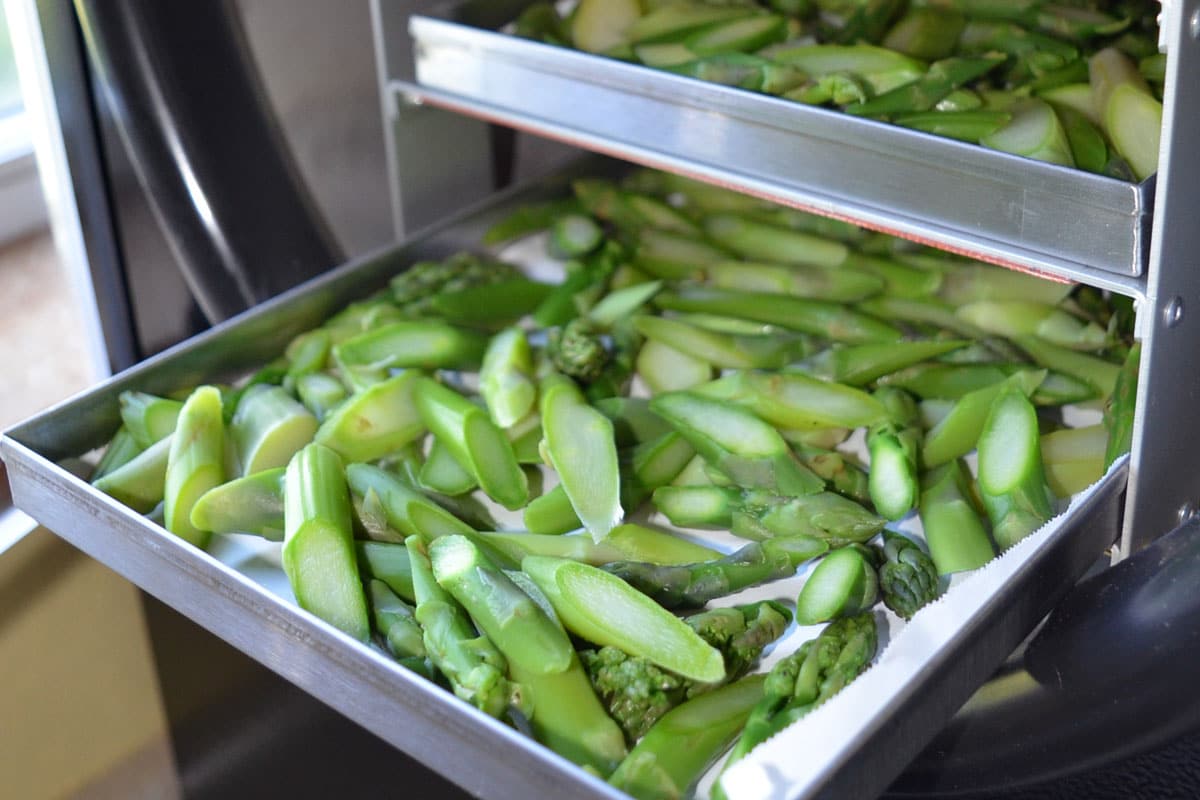
The prep work for freeze drying is the same no matter which brand of freeze dryer you use. Select the appropriate drying cycle for your unit when drying.
What’s the Difference Between Freeze Drying and Dehydrating?
Freeze drying uses a process called “lyophilization“. During lyophilization, water leaves the food by transforming directly from ice to vapor.
To do this, the freeze dryer drops the temperature of the food well below freezing. It’s then heated slightly while under a vacuum, triggering water vapor release. The deep freeze, heat slightly cycle is repeated until the product is dry.
In dehydrating, water goes from liquid to vapor state, leaving the food. Adding heat speeds up the process and helps to prevent spoiling.
Freeze dried food is crisp and light. It doesn’t shrink during drying. (Some foods even expand, but not freeze dried asparagus.) Dehydrated food shrinks, and the texture becomes leathery. Food may be difficult to recognize until rehydrating.
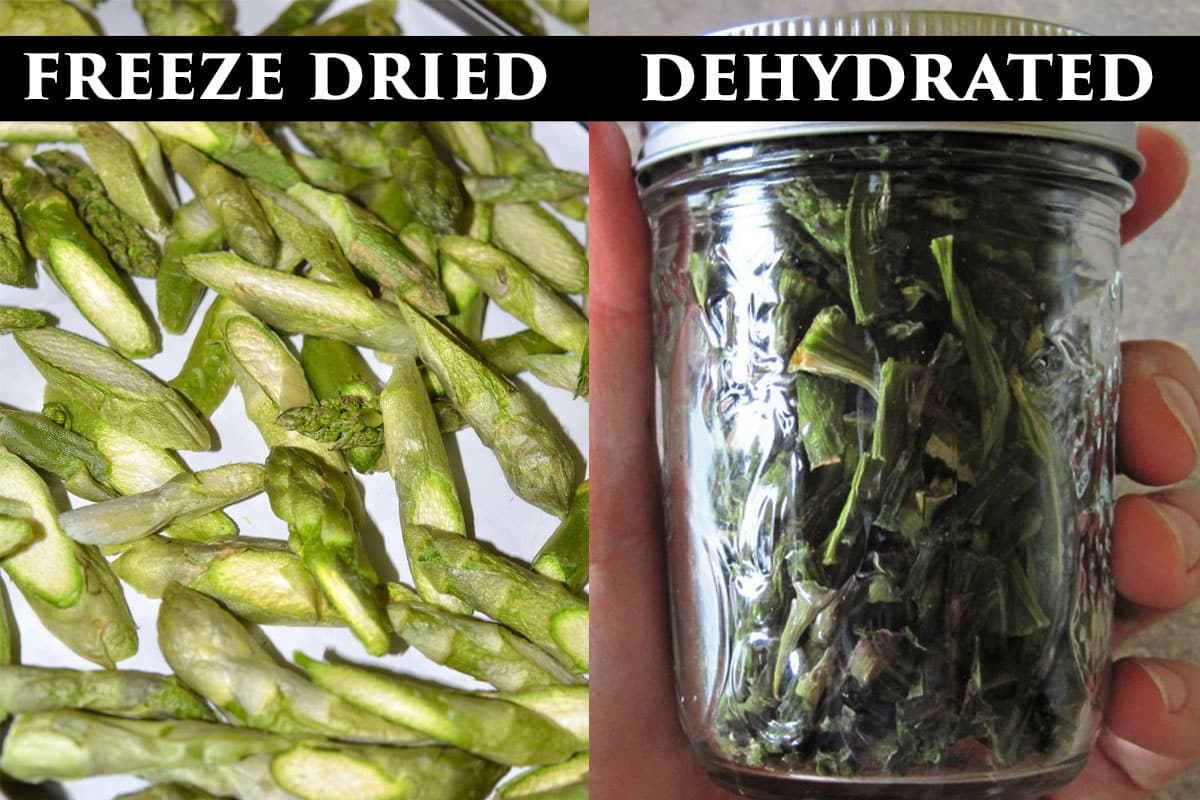
Both types of drying provide long shelf life. Dehydrated asparagus will last 3-5 years, though quality is best within the first few years. Freeze dried asparagus will last 10 years plus because it has more water removed.
Dehydrated asparagus is best used in soups, where it has plenty of time and water to slowly rehydrate. Properly dried, it’s quite tough to chew, so you need to rehydrate before eating.
Freeze dried asparagus holds its shape, so it’s easier to rehydrate. It will work in most recipes, or you can eat it dry as a snack. (Make sure to drink plenty of water!)
See “Dehydrator vs Freeze Dryer” for more information on the difference between the two processes and the equipment.
How to Freeze Dry Asparagus
Select fresh asparagus spears in good condition. Trim off the woody bottom portions if needed. See “How to Cut Asparagus” for more information on trimming.
My freeze dryer holds four quarts. Maximum recommended load size is no more than ten pounds. See your owner’s manual for recommend load size for your freeze dryer.
Wash the asparagus and slice into small, even pieces for freeze drying. It’s important to have pieces that are similar in size so they all dry at the same time. You also want to keep the slices relatively thin so they dry quicker.
I cut mine into thin diagonal slices for use in soups, casseroles and other cooked dishes. This shape also works for snacking, as the flat surface works well for scooping dips.
For best quality, blanch the asparagus slices before freeze drying. This deactivates the enzymes that break down the produce.
Bring a large pot of water to boil, and prepare a large bowl of ice water. Place the asparagus slices in the boiling water for 2 minutes, and then remove with a slotted spoon. Plunge the hot asparagus slices into the ice water to stop cooking.
Would you like to save this?
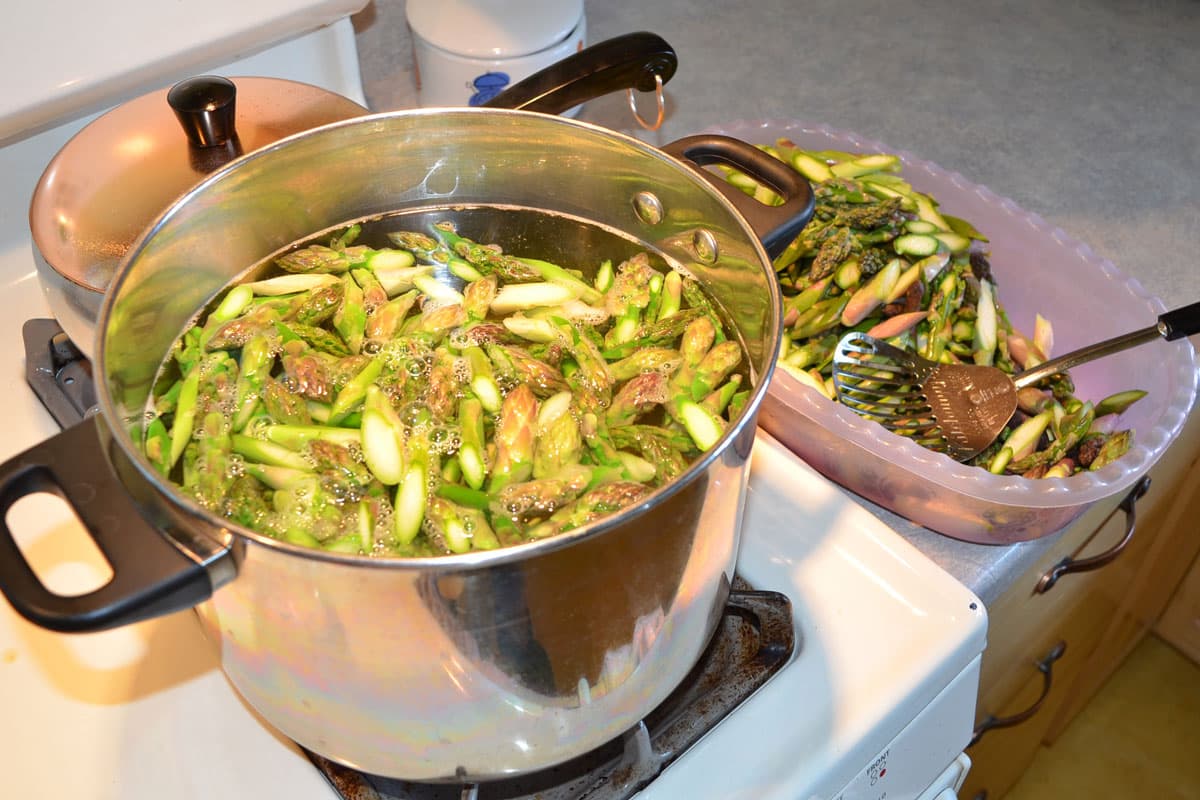
When the slices are completely cool, drain well and pat dry. I have a heavy duty salad spinner that works well for drying produce, but you can also pat dry with a kitchen towel.
Line freeze dryer trays with parchment or freezer paper for easier cleaning, if desired. Place asparagus slices in an even layer on the trays.

Load the trays in freeze dryer. Close drain valve. Check oil levels in vacuum pump and start the freeze drying cycle. Because of its high moisture level, asparagus may take over 24 hours to dry, depending on ambient conditions.
When cycle is complete, check dryness by breaking open some of your thickest pieces to make sure they are not cold in the center. If you have cold spots, add additional drying time. Remember, thin even slices will dry more quickly.
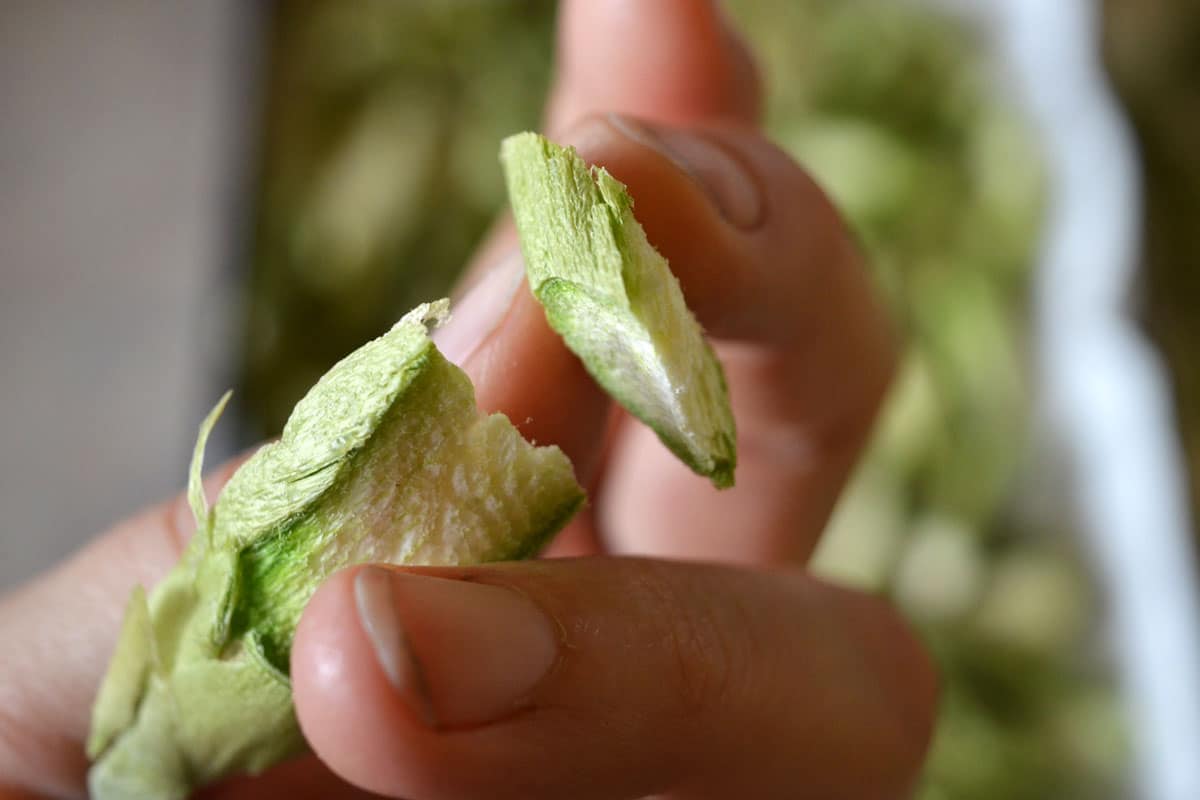
When asparagus is completely dry, pack into Mylar bags with oxygen absorbers and seal, or vacuum seal in mason jars. If you have any concerns about dryness, add a moisture absorber to the storage container, too.
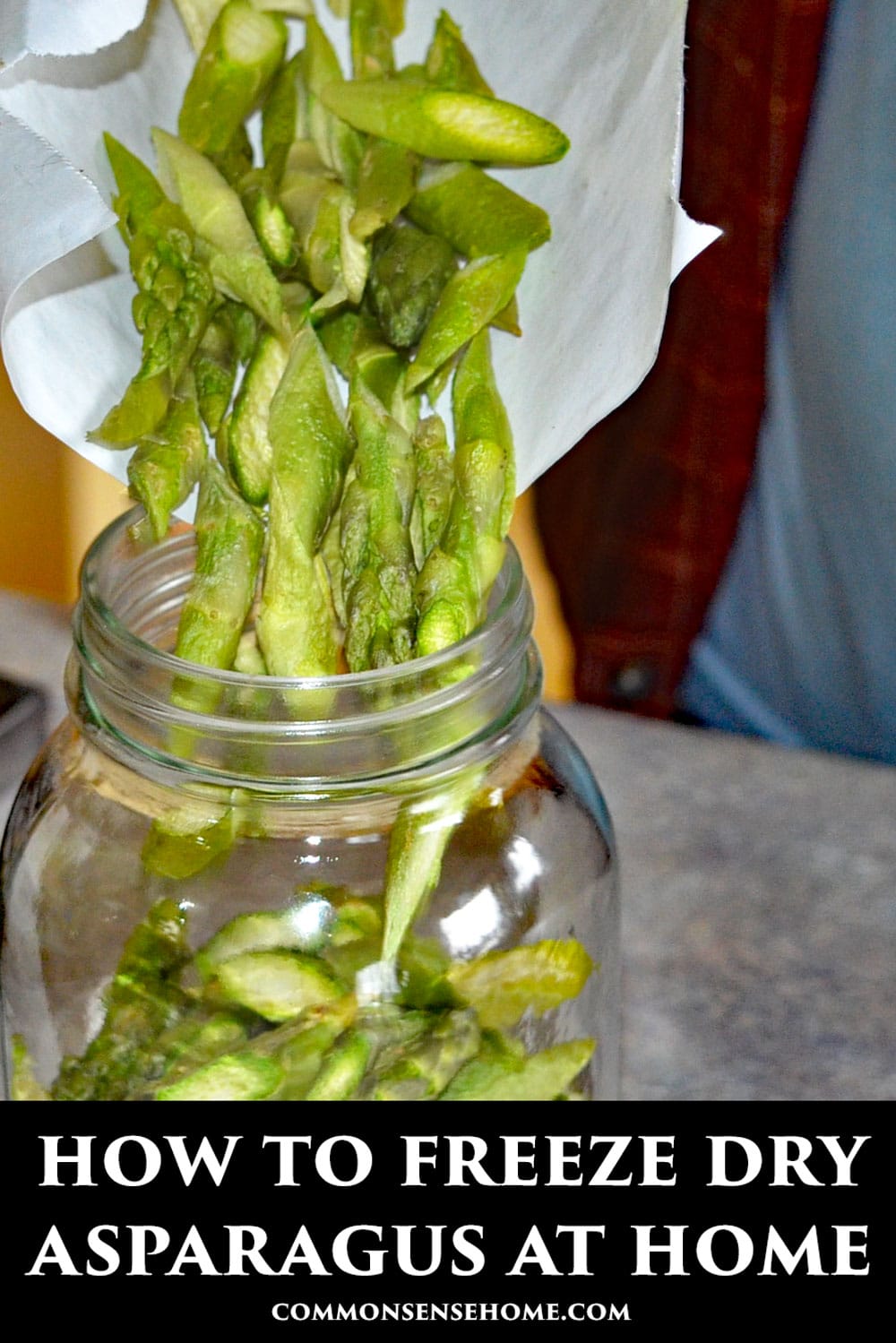
Freeze dried food will absorb moisture from the air quickly, so don’t leave the finished food sitting out.
To Rehydrate Freeze Dried Asparagus
To rehydrate freeze dried asparagus, pour the dried asparagus into a serving bowl and cover with hot water. Allow time to rehydrate, then pour off excess water and use. Alternatively, you can add water to the asparagus and then heat it on the stove top or in the microwave.
Check Home Freeze Dryer Pricing at Harvest Right or read my home freezer dryer review here.
More Ways to Use and Preserve Asparagus
How to Store Asparagus in the Refrigerator
Roasted Asparagus with Parmesan

This article is written by Laurie Neverman. Laurie grew up in the kitchen, learning baking and home cooking from her momma. At age 15, she and her mom and two sisters created Irene’s Custom Cakes & Catering, which was her summer job through most of high school and college.


